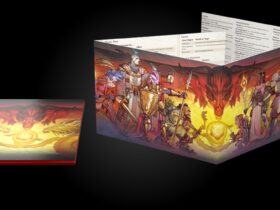Dungeons & Dragons can seem pretty complicated to new players making their first character, with multiple choices to make at each step of the process. While there are technically no wrong answers in D&D, you can hurt yourself by following some common mistakes new players make.
These mistakes usually come at the cost of balance, making your character too useful for some things or not useful enough for most things. While you are unlikely to completely break the character creation process, there are a handful of things to remember that will ensure your character remains fun and memorable.
8
Avoid Doubling Classes
While a party of only bards is fun every once in a while, you will want to make sure that everyone at the table has an understanding of what classes have already been chosen. This is mainly for balancing reasons, as a party lacking a healer, or rather having too many healers, can affect the overall gameplay.
This can also be frustrating for both players when they attempt to do something within their class description, and it becomes a battle about who gets to do it. Or rather, trying to convince the other player so you can save class resources while the Fighter lays bleeding out on the battlefield.
7
Pick The Right Weapon
One of the most common pitfalls of starting equipment is picking a weapon that will end up being near useless to you with the wrong combination of weapon properties and ability scores. You don’t want to pick up a flail thinking it will be a good Dexterity weapon.
This is mostly important for characters with a significant difference in Strength and Dexterity, where characters with high Dex should focus on ranged weapons or ones with the Finesse property. For classes with the Weapon Mastery feature, this decision will determine which weapons you are able to use most effectively.
6
Make Sure Your Character Can Exist
Consulting with your Dungeon Master is the first step in character creation, which is usually talked about at length during session zero, if your table has one. Even if you are playing from a module in a specific setting, the DM has the final say on which classes, species, and backgrounds are allowed.

Related
Dungeons & Dragons: 9 Mythological Creatures That Would Make Great Monsters
D&D is filled to the brim with amazing monsters, but these mythological creatures would compliment the roster beautifully.
This is usually to avoid species that wouldn’t make sense for the campaign, or for games with light magic or low-fantasy. These decisions can be negotiated within reason, but make sure you understand which options in the book aren’t options for your table.
5
Don’t Pick Only Damage Spells
While it might seem pretty awesome to be able to sling fire, lightning, and arcane blasts at every opportunity, you are most likely hurting your spellcaster if you only pick spells that are meant to deal damage. Even in combat, there are spells that can influence your enemies, disguise your allies, or any number of creative choices.
This is also important to remember, as you won’t always be in combat, and spells can be used at any time to achieve otherwise impossible goals. While it’s helpful to be able to disintegrate a demon from a hundred feet away, make sure you can also magically convince a guard to let your friends go.
Mage Hand is one of the best non-combat spells for new spellcasters.
4
Craft A Backstory That Matches Your Level
Making your first character in D&D, or any TTRPG, it’s fairly easy to get carried away in the process of making them unique and memorable. This is a common pitfall, as players end up creating retired generals and fallen angels despite meeting in a run-down tavern at level one.
While the goal is always to make a character that suits your interests and desires, making them too successful too early can cause conflicting party dynamics and raised eyebrows. Hopefully, by the end of the campaign, your character will obtain these legendary statuses with the help of friends and allies.
3
Learn What Your Character Does
Perhaps one of the hardest lessons to learn that can lead to the biggest conflicts at the table is not knowing what your character can do when it’s your turn in combat. Not only will this significantly slow down combat, but it can lead to making crucial yet avoidable mistakes.

Related
Dungeons & Dragons: 10 Best Campaign Ideas Using the Outer Planes
The Outer Planes are a vast area with tons of potential. Here are a few things you can do within its vastness for your campaign.
While you aren’t expected to research the entire class or spend the night before the session doing D&D homework, having a simple list of quick descriptions can remind you of your abilities. As always, if you’re unsure of the wording of a spell or feature, ask your DM for help.
2
Choose Skill Proficiencies That Compliment Your Ability Scores
Before you determine your skill proficiencies, you should already have your six base ability scores and a rough idea of who you want your character to be. Since your skills are scaled off your abilities, you will have a fairly mixed bag in terms of your strengths and weaknesses that you can accidentally make worse with the wrong skill choices.
Choosing which skills to be proficient in can help your Bard character become especially proficient in lies and deception, or your Rogue to be able to reliably pickpocket the guard’s key. It can also bring a skill out of the negatives, if you want to ensure you can at least succeed on some History checks.
Bards, Rogues, and Rangers get Expertise at later levels, which doubles your proficiency bonus, and should be applied to your most used skills.
1
Backgrounds Don’t Have To Be Accurate
The backgrounds in Dungeons & Dragons can be pretty narrow in terms of the total potential in backstories and world building unique for each type of character. While the descriptions and names of backgrounds imply a specific occupation, you can entirely ignore these for the sake of your character.
What matters in the process of choosing a background is making sure you are getting the best skill proficiencies, tools, feat, and equipment that best fit your character. The names and descriptions are there to help you choose one at a glance, but you don’t have to make your character’s backstory a true acolyte just because you want Calligrapher’s Supplies.






















Leave a Reply